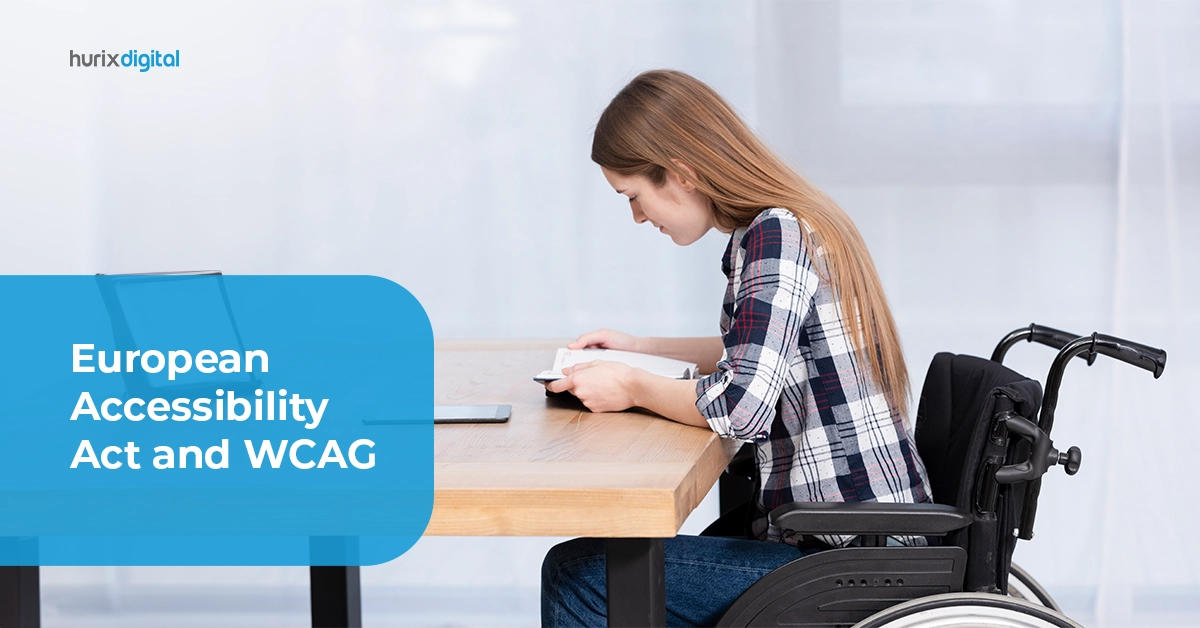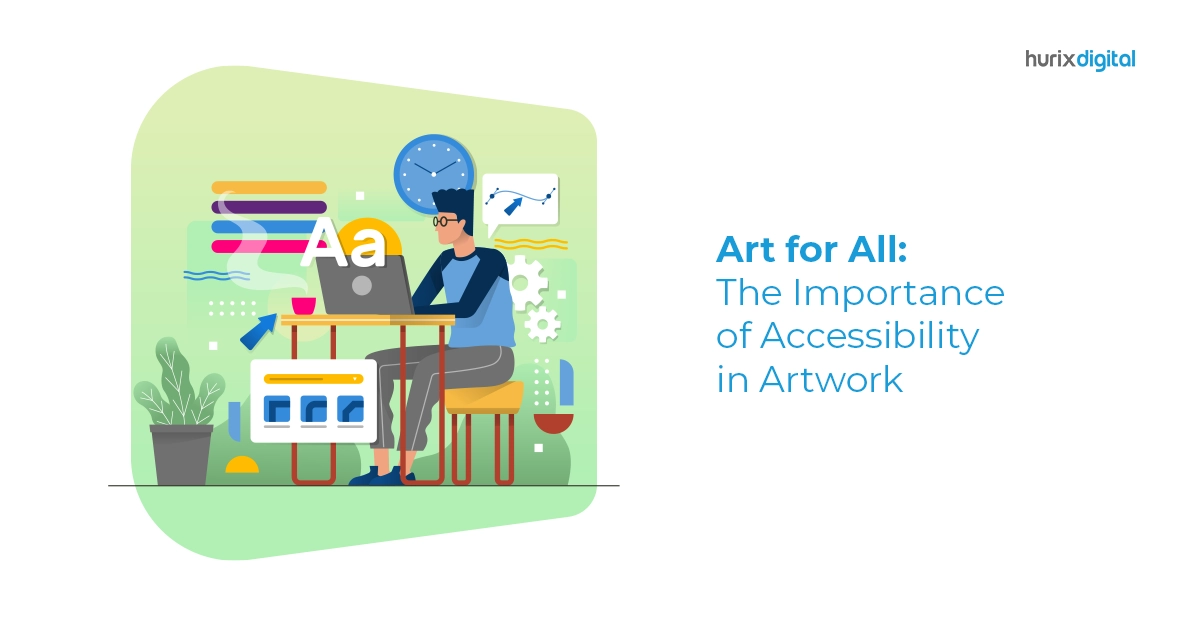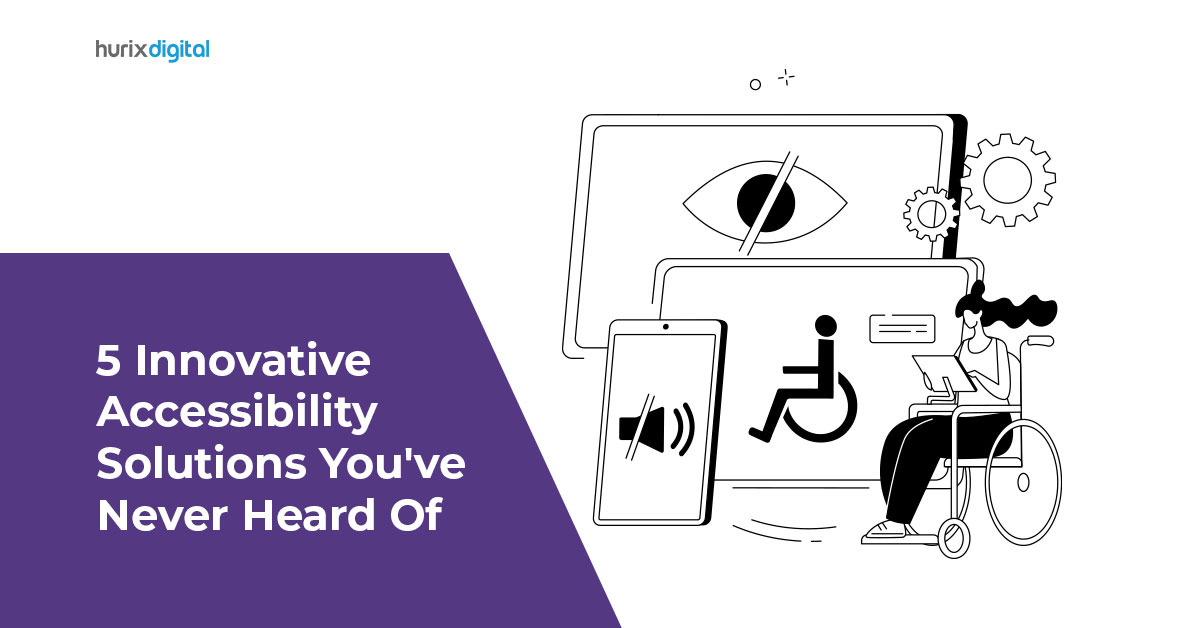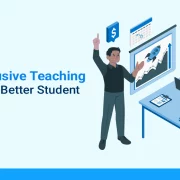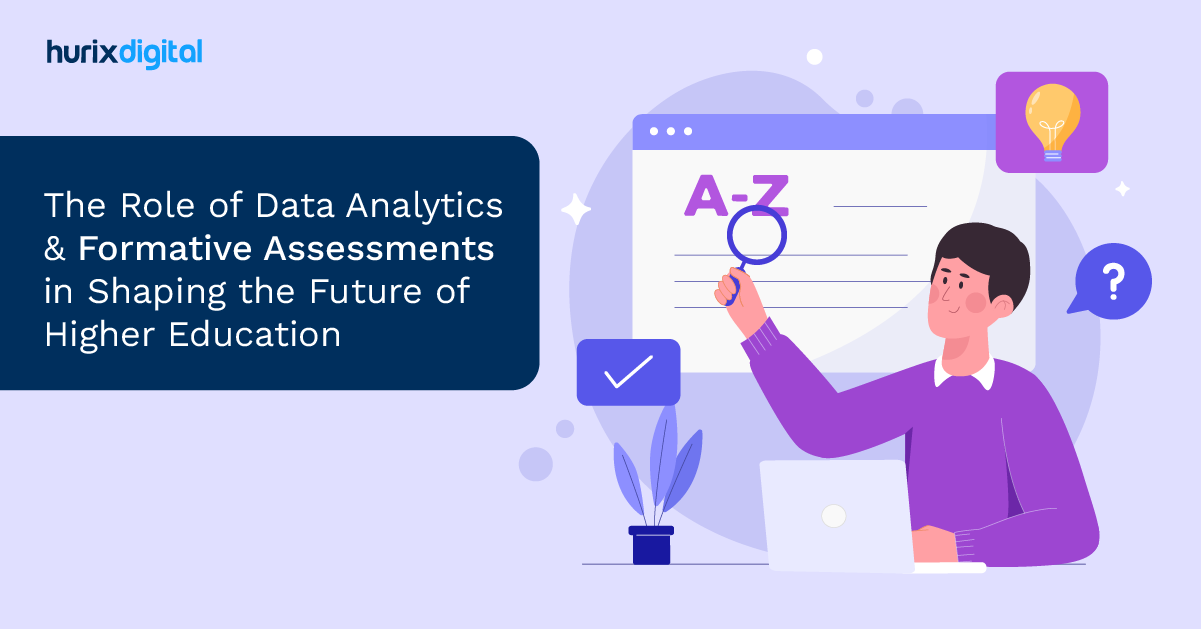
The Role of Data Analytics & Formative Assessments in Shaping the Future of Higher Education
Summary
This blog explores formative assessment in higher education, emphasizing strategies, tools, and benefits like data analytics and real-time feedback to enhance engagement, personalize learning, and improve educational outcomes.
Online education and learning have been growing steadily since the pandemic. Despite schools and learning institutions returning to physical learning, online learning initiatives are still making an impact and will only continue to grow further.
The eLearning market is experiencing explosive growth. Valued at approximately $260.07 billion in 2023, the sector is projected to surge at a compound annual growth rate (CAGR) of 20.6% from 2024 to 2034, ultimately reaching a massive $2,041.35 billion. This rapid expansion is fueled by increased accessibility to online education, advancements in learning technologies like AI and VR, and a growing demand for flexible and personalized learning experiences. These figures, sourced from a Precedence Research report, underscore the transformative impact of e-learning across various sectors and its potential to revolutionize education and training.
Formative assessments have been gaining momentum, a dynamic process involving online mechanisms to test and provide real-time feedback. Due to their several benefits, they are now part of mainstream education, making learning more simplified and effective.
Table of Contents:
- What is Formative Assessment?
- Five Key Reasons Why Formative Assessment is Important
- Five Effective Formative Assessment Strategies for Student Learning
- Top 10 Powerful Tools for Formative Assessment in Education
- When to Use Formative or Summative Assessments in Education?
- Formative Assessment: A Guide to Its Purpose and Appropriate Application
- Decoding Summative Assessment: When and How to Utilize its Evaluative Power?
- Understanding and Contrasting Formative and Summative Assessment
- How to Choose the Right Online Assessment Platform?
- Intuitive User Interface
- Seamless Integration of Multimedia Elements
- Tailoring Assessment with Customizable Question Papers
- Universal Accessibility and Support for Multiple Languages
- Robust Proctoring Capabilities
- Grading and Reporting Advancements
- Fortifying Security and Ensuring Scalability
- Responsive Support Team for a Smooth User Experience
- In Conclusion
What is Formative Assessment?
Formative assessment is an ongoing practice in education that monitors and assesses a student’s learning progress and comprehension throughout a course.
Unlike summative assessment, which is administered at the end of a learning period and provides a final grade or evaluation of the student’s learning, formative assessment can be conducted regularly. It seeks to enlighten the teacher and the student about the student’s present level of understanding and areas in need of improvement.
Some formative assessment examples include interactive quizzes, multiple-choice questions (MCQs), assignments, or group projects, which help students test their understanding.
This type of assessment provides valuable feedback to both the student and the teacher, which can be utilized to adjust and improve the learning experience.
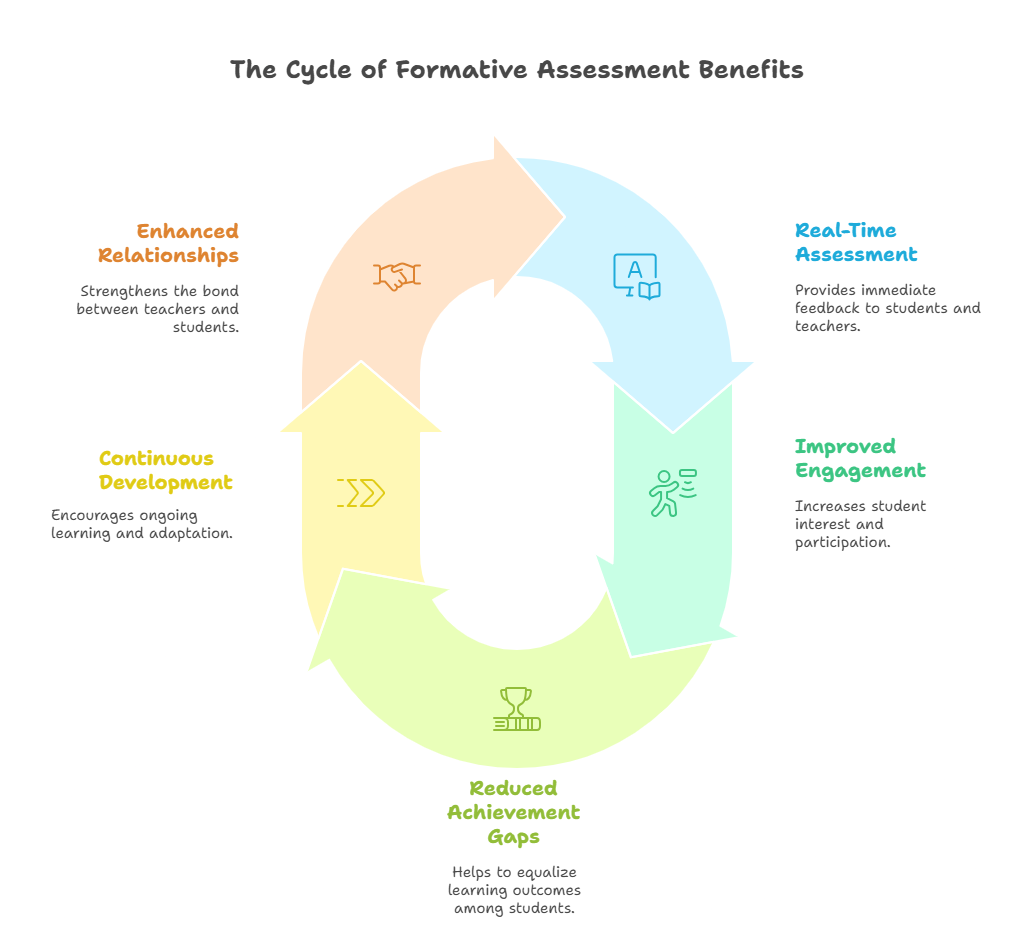
Five Key Reasons Why Formative Assessment is Important
Here are some key reasons why it is crucial for learning:
1. Real-Time Student Assessment
Formative assessment is like a GPS for learning. It helps students test their knowledge and receive instant feedback.
It’s all about the journey of learning, not just the destination. This ensures that they receive timely feedback and understand areas of improvement.
2. Improved Student Engagement
Teachers can ensure they provide iterative feedback by gaining real-time input into students’ learning and areas for improvement.
Thus, students are more likely to stay focused and participate actively in class while their gaps or doubts get resolved in time.
3. Reduction In Achievement Gaps
Formative assessment can help identify achievement gaps among students early on. Teachers can then implement strategies to bridge these gaps, ensuring that all students have an opportunity to succeed.
4. Continuous Development
Since formative assessments use interactive quizzes and gamified learning mechanisms for teaching, they create a continuous learning and improvement culture.
Teachers are also encouraged to reflect on their teaching methods, seek professional development, and adapt to their students’ evolving needs.
5. Enhanced Teacher-Student Relationships
Regular interactions through formative assessment build stronger teacher-student relationships. Students feel supported and valued, which can positively impact their overall educational experience.
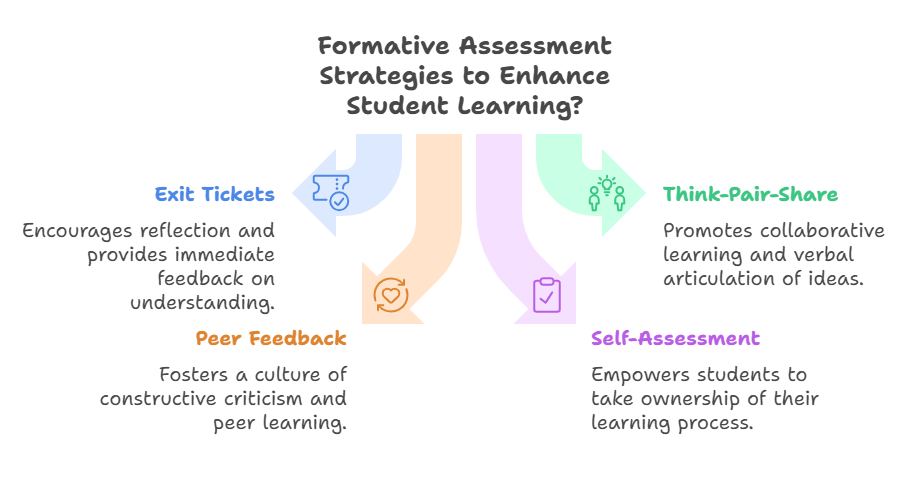
Five Effective Formative Assessment Strategies for Student Learning
Below are the top five formative assessment strategies that can significantly enhance student learning outcomes:
1. Strategy 1: Exit Tickets
Exit tickets are short questions or tasks that students complete at the end of a lesson or activity. They are designed to check students’ understanding of the main learning objectives and identify gaps or misconceptions.
This is a prominent digital formative assessment tool that can also be used to collect feedback from students about the lesson, such as what they liked, what they found challenging, or what they want to learn more about.
Some examples of exit ticket questions are:
- What are three things you learned today?
- What is one question you still have about the topic?
- How confident are you in applying what you learned today?
- How would you rate the lesson on a scale of 1 to 5?
- What is one thing you would change about the lesson?
Exit tickets can be completed on paper, online, or verbally. One advantage of using digital tools for exit tickets is that they can provide instant feedback and data analysis for both students and teachers. Google Forms and Socratives are some popular digital tools for exit tickets.
2. Strategy 2: Think-Pair-Share
Think-pair-share is a collaborative learning strategy that involves three steps:
- Think: Students think individually about a question or problem the teacher poses.
- Pair: Students pair up with a partner and discuss their thoughts and ideas.
- Share: Students share their answers or solutions with the whole class or a larger group.
Think-pair-share is a simple and effective way to engage students in higher-order thinking, such as analysis, synthesis, and evaluation. It also promotes communication, listening, and social skills. This strategy can be used for any subject or topic and adapted to different difficulty and complexity levels.
Some examples of think-pair-share questions are:
- How would you solve this math problem?
- What are the main arguments for and against this issue?
- How does this concept relate to your own experience or interest?
- What are some of the similarities and differences between these two texts? How would you explain this phenomenon to a younger student?
Students can do think-pair-share verbally, in writing, or online. One advantage of implementing think-pair-share with digital tools is their capacity to foster and improve student engagement and teamwork. Some of the popular digital tools for think-pair-share are Padlet, Flipgrid, and Nearpod.
3. Strategy 3: Peer Feedback
Peer feedback is giving and receiving constructive comments and suggestions from peers on one’s work or performance. It can help students improve their skills, knowledge, and confidence, as well as develop critical thinking, self-reflection, and metacognition.
This formative assessment strategy can also foster a culture of collaboration, respect, and support among students.
Some examples of peer feedback activities are:
- Peer Review: Students exchange their drafts or products with a partner or a small group and provide feedback based on a rubric or a checklist. The feedback can focus on the content, structure, language, presentation, or any other aspect of the work. It can be given orally, in writing, or online.
- Peer Assessment: Students evaluate their peers’ work or performance using a scale or rating system. The evaluation can be based on the same criteria as the teacher’s assessment or on different criteria agreed upon by the students. It can be done individually or collectively and can be anonymous or not.
- Peer Coaching: Students work together in pairs or teams to help each other achieve their learning goals. They can observe, question, advise, and encourage each other and share their experiences and strategies. They can also set goals, monitor progress, and celebrate achievements.
4. Strategy 4: Self-Assessment
Self-assessment is a process of evaluating one’s work or performance using specific criteria and standards. This formative assessment strategy can help students develop self-awareness, self-regulation, and self-improvement. It can also enhance students’ ownership, responsibility, and autonomy over their learning.
Some examples of self-assessment activities are:
- Self-Check: Students check their work using a rubric, a checklist, or an answer key. They can identify their strengths and weaknesses and correct their errors or gaps. They can also rate their confidence or satisfaction with their work and set goals for improvement.
- Self-Reflection: Students reflect on their work or performance using questions or prompts. They can express their feelings, thoughts, and opinions about their work and analyze their learning process and outcomes. They can also identify what they learned, what they enjoyed, what they struggled with, and what they want to learn next.
- Self-Monitoring: Students monitor their progress and performance using tools such as graphs, charts, logs, or portfolios. They can track their achievements, challenges, and changes over time and compare their results with their expectations or standards. They can also adjust their strategies, actions, and goals based on their feedback and data.
Implementing self-assessment as a formative assessment strategy can profoundly benefit students, especially in the K12 sector. It promotes academic growth and nurtures essential life skills crucial for their future success.
5. Strategy 5: Quizzes and Polls
Quizzes and polls are short and simple assessments that can be used to measure students’ knowledge, understanding, or opinion on a topic or subject. They can be used for various purposes, such as:
- Pre-Assessment: To activate students’ prior knowledge and assess their readiness for learning.
- Post-Assessment: To check students’ mastery and retention of the learning objectives.
- Formative Assessment: To monitor students’ progress and provide feedback during the learning process.
- Summative Assessment: To evaluate students’ achievement and performance at the end of a unit or course.
- Diagnostic Assessment: To identify students’ strengths and weaknesses and provide remediation or enrichment.
- Survey: To collect students’ feedback, preferences, or interests.
Some examples of quiz and poll questions are:
- What is the formula for the area of a circle?
- How do you feel about the lesson today?
- Which of these is an example of a renewable energy source?
- What is your favorite genre of music?
- How would you rate your confidence in solving this problem?
Students can use digital tools like Kahoot and Mentimeter for quizzes and polls, which will make the assessment more fun, interactive, and adaptive.
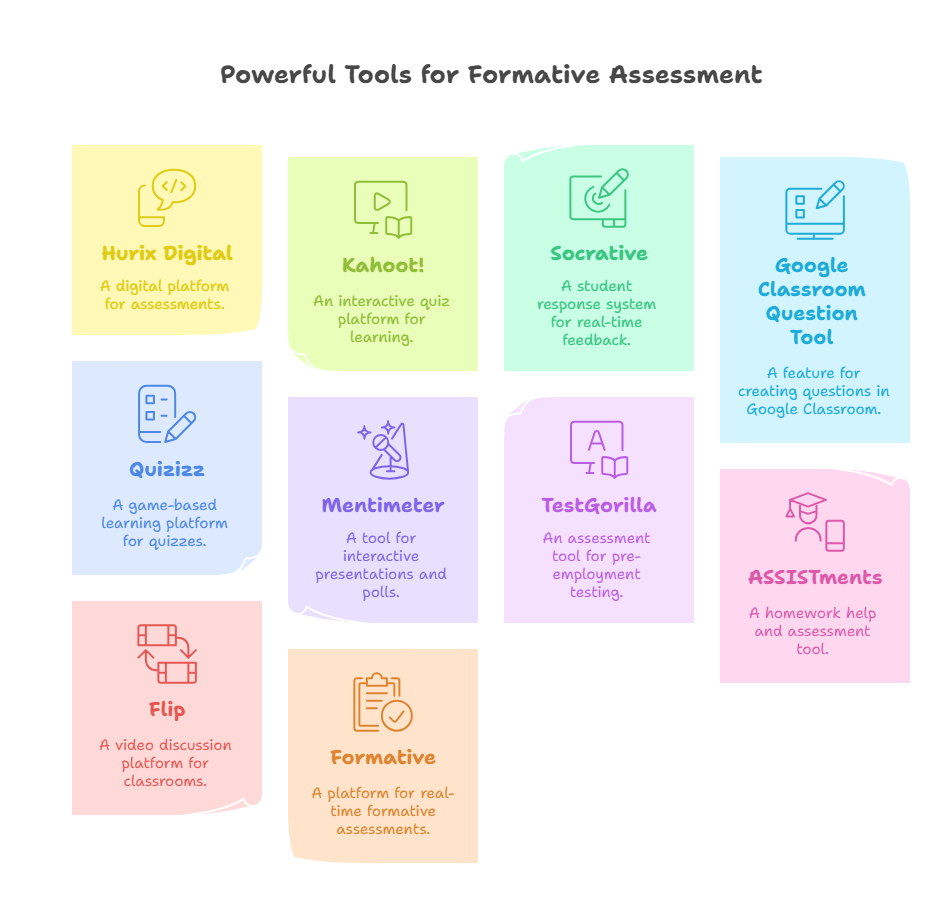
Top 10 Powerful Tools for Formative Assessment in Education
Here is a look at some of the top formative assessment tools that can be a great addition to your curriculum:
1. Hurix Digital
Hurix Digital offers a versatile platform for formative assessments, allowing educators to create and deliver interactive assessments, quizzes, and surveys to gauge student understanding and adapt instruction accordingly.
These assessments can easily sync with its end-to-end teaching platform, making it ideal for educational institutions and workplace learning.
- Why it’s on the list: Hurix Digital stands out for its versatility in creating interactive assessments, quizzes, and surveys. It provides real-time data analytics for teachers and offers a one-stop solution for learning needs.
- Key Features: Easy customization, real-time reporting, multimedia-rich content, end-to-end assessment, and learning content management.
2. Kahoot!
Kahoot! is a popular gamified learning platform that makes formative assessment engaging.
Teachers can use it to create fun quizzes, surveys, and challenges to assess student knowledge while promoting active participation.
- Why it’s on the list: Kahoot! adds an element of fun to formative assessment with gamified quizzes and challenges, making learning engaging.
- Key Features: Gamified quizzes, pre-made content library, engagement-focused.
3. Socrative
Socrative is a simple yet interactive classroom response system that enables real-time formative assessment through quizzes, polls, and exit tickets.
It provides instant feedback for teachers and students and is widely used in K-12 and higher educational institutions.
- Why it’s on the list: Ideal option for secure and anonymous formative assessment options, ensuring students feel comfortable sharing their thoughts.
- Key Features: Anonymous feedback, secure polling, and discussion boards.
4. Google Classroom Question Tool
Part of the Google Classroom framework, Ask a Question, is a feature that allows teachers to get quick feedback from all students.
Educators can pose questions to students, view their responses, and provide feedback within the Google Classroom environment, streamlining the assessment process.
- Why it’s on the list: It seamlessly incorporates formative assessment into Google Classroom, the popular education platform.
- Key Features: Easy integration, real-time responses, and all Google Classroom features.
5. Quizizz
Quizizz offers a gamified approach to formative assessment with a vast library of user-generated quizzes. It engages students with competitive elements while providing valuable insights into their progress.
- Why it’s on the list: Quizizz combines formative assessment with a competitive twist, fostering student engagement and motivation.
- Key Features: Gamified quizzes, detailed feedback, student-paced mode.
6. Mentimeter
Mentimeter is a versatile presentation and polling tool that facilitates interactive formative assessment.
Educators can create polls, quizzes, and surveys to gauge student comprehension during lessons or presentations.
- Why it’s on the list: It provides a unique blend of formative assessment and presentation capabilities, enhancing interactive learning.
- Key Features: Interactive presentations, real-time polls, and data tracking.
7. TestGorilla
A popular pre-employment assessment tool, TestGorilla has a range of customizable assessments that teachers can use to create their quizzes.
This includes projects and scenario-based questions to test students’ learning in a real-world environment.
- Why it’s on the list: TestGorilla focuses on pre-employment assessments and skills testing, making it valuable for evaluating candidates’ suitability for various roles.
- Key Features: Pre-employment assessments, customizable tests, ready-to-use templates, and candidate evaluations.
8. ASSISTments
ASSISTments is an educational platform focusing on maths assessment and providing real-time student feedback through actionable learning data.
It allows students to respond to questions or prompts via short video clips, fostering engagement and communication.
- Why it’s on the list: ASSISTments empower educators to create, assign, and grade formative assessments, offering detailed reports for tailored instruction.
- Key Features: Assignment creation, detailed reports, student progress tracking.
9. Flip
Flip is a free app by Microsoft that allows students to respond to questions or prompts via short video clips, fostering engagement and communication.
This is ideal for in-classroom assessment, where teachers can assess students on particular lessons and provide interactive projects in groups or stand-alone.
- Why it’s on the list: Flip utilizes video discussions for formative assessment, promoting engagement and communication among students.
- Key Features: Video responses, discussion boards, engagement-focused.
10. Formative
As the name suggests, Formative is a tool designed to create formative assessments. Educators can create assignments, quizzes, and polls, and students can complete them online, enabling real-time feedback and data analysis.
- Why it’s on the list: The best part is that the tool can easily blend in with your other educational platforms, making it a trusted add-on for most educational institutions.
- Key Features: Customizable assessments, real-time feedback, and analytics.
When to Use Formative or Summative Assessments in Education?
Classroom assessment answers essential questions about student progress and learning objectives, guiding educators to enhance the overall academic experience. From in-person observations to advanced software analyses, various methods measure student progress. This spectrum includes interim, benchmark, diagnostic, and screening assessments, with formative and summative assessments at opposite ends.
Formative Assessment: A Guide to Its Purpose and Appropriate Application
Formative assessment functions as a dynamic monitoring and evaluation tool throughout students’ learning journeys, offering continuous feedback to optimize educational outcomes. Similar to a GPS in a vehicle, it empowers teachers to recalibrate and guide students effectively.
Various formative assessment examples include quizzes, class games, spontaneous evaluations, teacher observations, and exit tickets.
Imagine a history teacher concluding a unit on World War II with a brief quiz asking students to identify key events, significant figures, and the outcomes of the war. This quick assessment offers a rapid overview of students’ understanding and retention of the historical content.
Because formative assessment is qualitative, it immediately gauges students’ progress, fostering opportunities for personalized instruction that meets individual needs. Valuable insights from this assessment inform teachers’ decisions in adapting lesson plans and employing alternative instructional methods. For instance, a student facing challenges with a concept after completing a worksheet might find benefit in a class game reinforcing the same skills and concepts.
Decoding Summative Assessment: When and How to Utilize its Evaluative Power?
Summative assessments evaluate a student’s learning, retention, and progress upon the completion of a study, book, or chapter. Their primary goal is to determine whether students have attained the anticipated knowledge.
These assessments take diverse forms, including state tests, final exams, reports, presentations, and projects that showcase collective knowledge acquired over a study period or chapter. Usually aligned with specific guidelines, milestones, and rating scales, summative assessments rely on quantitative data, presenting results in the form of a scale score, percentage, or rating.
Smaller-scale summative assessments, like chapter tests, influence future lesson plans. In contrast, larger-scale assessments like final exams and statewide tests have far-reaching implications, impacting not only student class placement but also district-wide curriculum planning.
It’s crucial to recognize that assessments don’t always neatly fall into either the formative or summative categories. For example, interim and benchmark assessments help educators monitor student progress throughout the learning journey.
Understanding and Contrasting Formative and Summative Assessment
Summative and formative are the two major types of assessment that serve distinct purposes in the field of education.
Here’s an overview of the key differences between formative and summative assessments:
- Formative assessment focuses on ongoing learning during a course, while summative assessment measures overall knowledge and skills after completing a unit or course.
- Formative assessment is often referred to as “assessment for learning,” providing real-time insights for teachers to adapt their instruction based on student progress.
- The summative assessment offers a comprehensive overview of what students have learned over an extended period, such as a semester or an entire year, and is crucial in determining readiness to advance to the next level.
- Summative assessments, often with high stakes, such as program admission or final grades, require careful crafting of multiple-choice items and clear rubrics for written and oral responses to ensure validity and reliability.
- Formative assessments can alter students’ learning trajectories by prompting teachers to make informed instructional decisions based on real-time insights into student progress.
- When used effectively and in a balanced way, both formative and summative assessments contribute to a comprehensive understanding of student progress and learning.
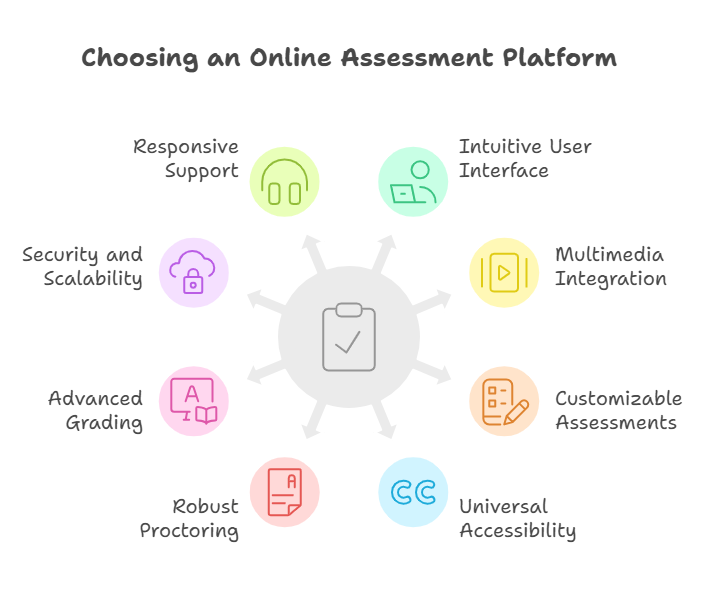
How to Choose the Right Online Assessment Platform?
Certain non-negotiable factors should be considered when choosing the right online assessment platform or service to ensure optimal functionality and user experience.
1. Intuitive User Interface
Choose platforms with an easy-to-navigate interface, allowing teachers to create online tests effortlessly and enabling students to navigate them seamlessly.
A user-friendly interface not only saves time but also enhances overall productivity.
2. Seamless Integration of Multimedia Elements
Ensure the online assessment platform supports multimedia elements like videos, audio, images, graphs, and charts. This enhances the engagement level of assessments and makes them accessible to students with different learning abilities. For example, incorporating videos caters to both visual and auditory learners.
3. Tailoring Assessment with Customizable Question Papers
Look for platforms with a comprehensive question bank for various subjects and courses. It should empower teachers to customize or create new questions, facilitating individual and group assessments based on knowledge and progress.
4. Universal Accessibility and Support for Multiple Languages
Choose a platform that adheres to standard accessibility guidelines, allowing students with disabilities easy access to assessments. Additionally, make sure it supports the conversion of question papers into multiple languages, accommodating regional students who prefer taking tests in their native languages.
5. Robust Proctoring Capabilities
In the digital era, preventing cheating and plagiarism is crucial. Online assessment platforms must integrate robust proctoring capabilities to maintain the integrity of assessments.
6. Grading and Reporting Advancements
Look for platforms that leverage AI for automated grading and generate detailed analytical reports based on test performance. This feature provides valuable insights into students’ academic progress.
7. Fortifying Security and Ensuring Scalability
Given the global reach of online education, scalability is essential to accommodate a growing number of students. The platform should also implement a robust AI assessment framework to ensure data accuracy and incorporate encryption measures to safeguard teacher and student data from unauthorized access.
8. Responsive Support Team for a Smooth User Experience
Opt for platforms with a dependable, responsive, and friendly customer support team. This support is crucial during the installation process and remains valuable for addressing any issues that may arise afterward.
In Conclusion
The integration of formative assessment and data analytics is reshaping the landscape of higher education. By leveraging real-time feedback, personalized learning strategies, and data-driven insights, educators can enhance student engagement, bridge achievement gaps, and foster continuous improvement. These assessments empower students to take charge of their learning and enable institutions to refine their teaching methodologies for better academic outcomes.
With the rapid expansion of e-learning and advancements in digital education tools, formative assessment strategies are becoming more sophisticated, interactive, and accessible. Platforms like Hurix Digital, Kahoot!, and Socrative are revolutionizing how educators assess and adapt instruction, ensuring a more engaging and effective learning experience.
As technology continues to evolve, the future of education will increasingly rely on data-driven decision-making and adaptive learning models. Institutions that embrace formative assessment and data analytics will be better positioned to support student success, optimize educational resources, and drive long-term institutional growth. By integrating these innovative approaches, higher education can create a more inclusive, personalized, and effective learning environment for the next generation of learners.

Senior Vice President
A Business Development professional with >20 years of experience with strong capability to sell new solutions and develop new markets from scratch. New Market Entry Specialist with experience of working in two of the largest emerging markets – China & India. Also covered other key markets in APAC, US, EU & ME. Exceptional experience of conceptualizing, ideating and selling new learning technologies like VR AR, etc. across multiple industry verticals.

